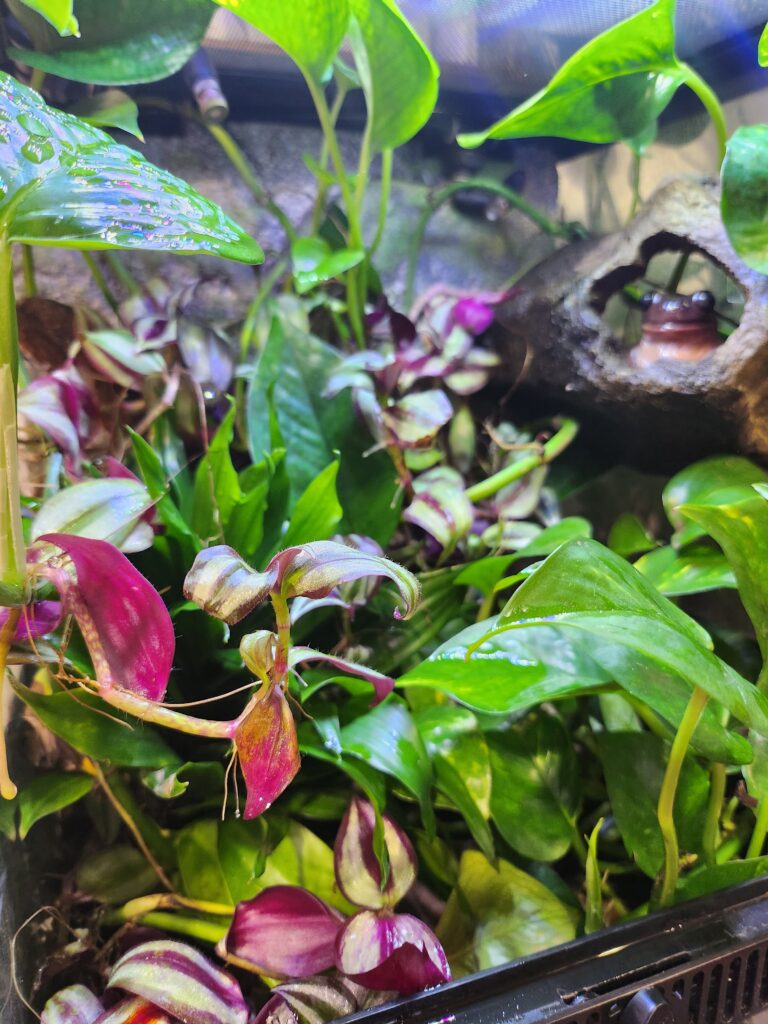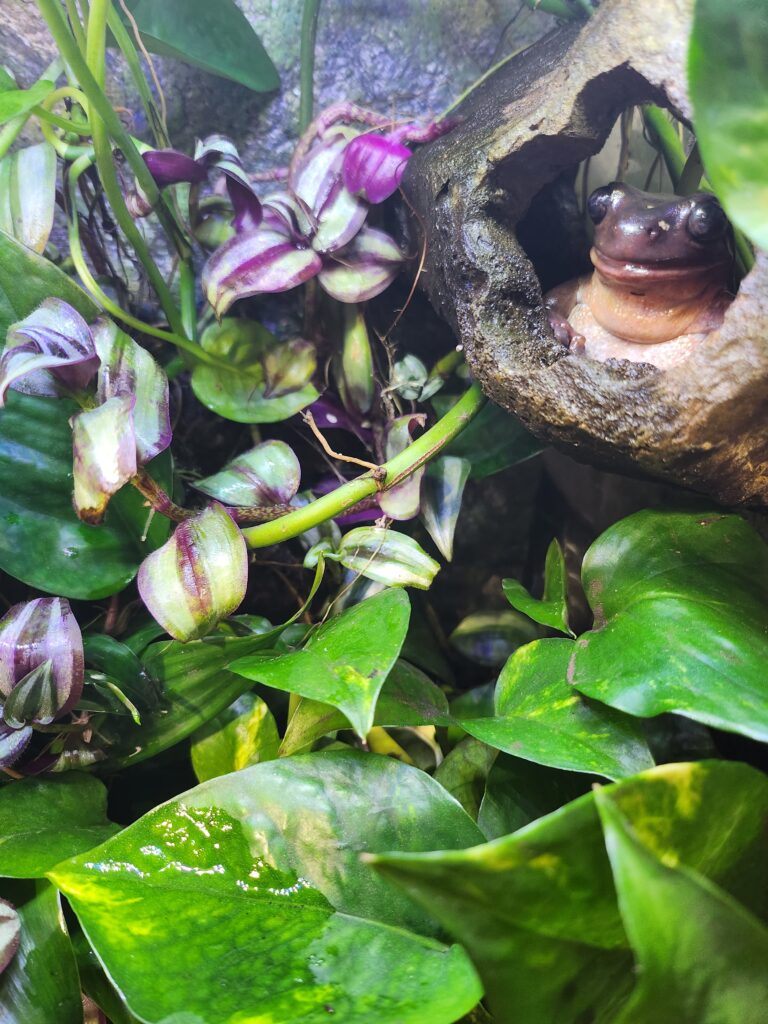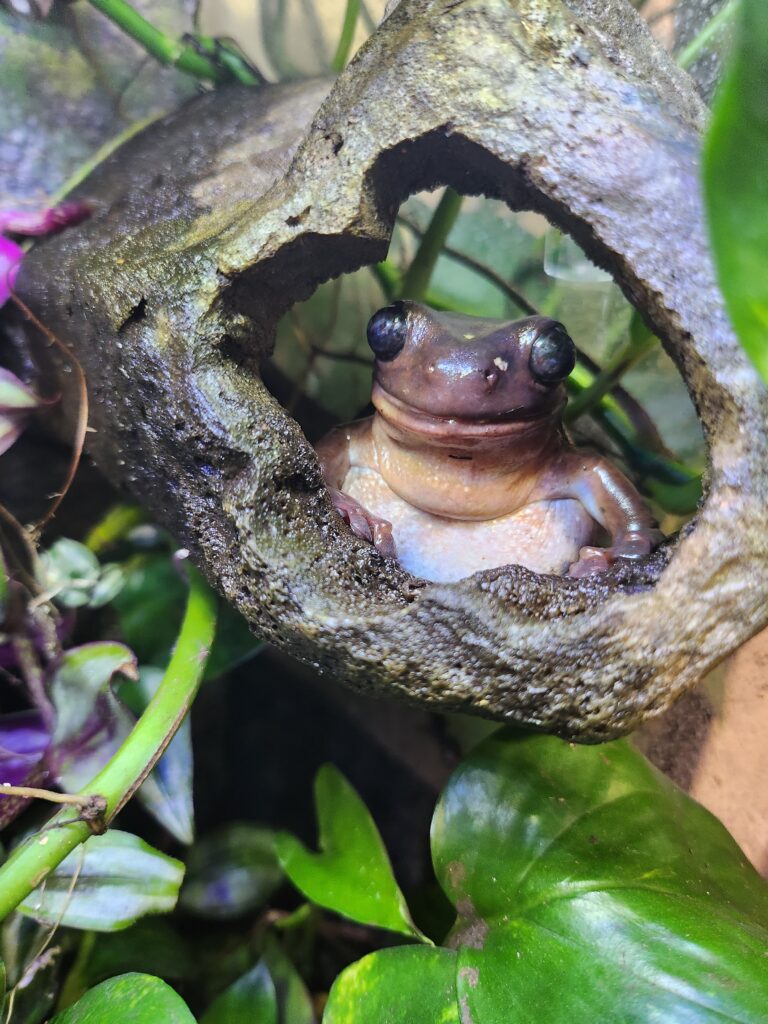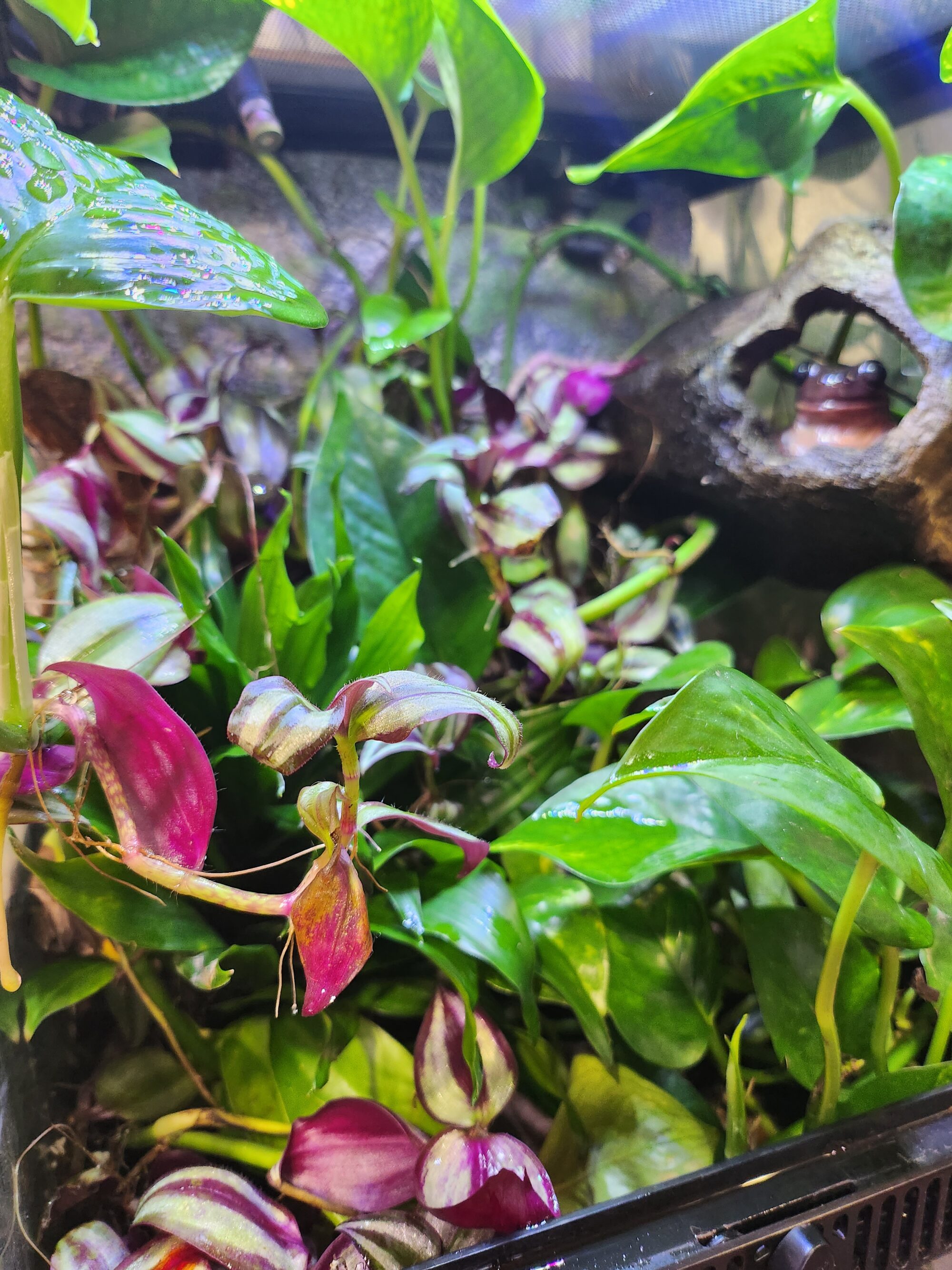What is a Bioactive Setup?
The whole idea of bioactive setups is to decrease maintenance by adding things that sustain each other, creating their own little ecosystem. This includes some little critters to help clean up waste. Bioactive setups have a few main components. Firstly, a cleanup crew of bugs is pretty much a prerequisite. Secondly, live plants. And lastly, some type of reptile or amphibian. These elements work together to create a little ecosystem in the terrarium.
That’s not to say that these are entirely self-sustaining ecosystems. You’ll still have to spot clean sometimes, clean the glass, etc. You still have to feed whatever animal is in there, in my case, a white tree frog. But it decreases the daily maintenance significantly.

There is a vast knowledge barrier regarding bioactive setups; this post is by no means a comprehensive guide but more of a general guide to give you a place to start and to tell you what worked for me. Additionally, sometimes bioactive setups are overcomplicated, but they don’t have to be. Just stick to the base requirements and try not to get lost in the minutia; remember, this is supposed to be fun!
Setting up a Bioactive Terrarium: It’s all about layers, layers, and more layers.
Firstly, a drainage layer, I use LECA (astonishing, I know).
Then, something to separate the layers, I got some window screening from Home Depot and cut it to fit the bottom of my tank. This keeps the bioactive materials (mostly soil) from getting into the drainage layer.
On top of the barrier, add in your substrate. Any substrate will do, I got some from the Bio Dude to start out, and it’s been working well. Since it’s bioactive, I’ve never changed his substrate; I don’t have to.
Then, on top of the substrate, you put the live plants and a little leaf litter down to help give the cleanup crew something to munch on. And that’s it, you’ve done it; just add the cleanup crew, and you’re done.
Setting up the bioactive layers can be as complicated or simple as you want. I try to keep things simple, sustainable, and cheap, so I DIYed my setup. There are kits you can buy, and no shame if you do, but if you can DIY it, I recommend it; it will save you a lot of money.
LECA you can get at your local garden store, screen for the barrier at Home Depot or similar, and dirt from a garden center (just make sure no fertilizers or chemicals in it).
The leaf litter is the one thing I do not recommend DIYing. I tried this once, and it was a huge pain. It culminated with ants in my bioactive setup, an unmitigated disaster. Go to your local reptile store and pay $10 for it; I promise it’s easier.
Basic Requirements
Like any enclosure, you’ll need light, heat, and humidity. I got into details on my recommendations for white tree frogs, specifically here. Still, these things will change based on what animal you have in the tank.
Live plants
This is why I initially looked into bioactive setups; I heard wonderous tales about live plants growing like mad in bioactive setups. And as I am a self-proclaimed plant addict, I wanted in. My plants grow so well in the bioactive setup; it’s crazy; they have roots for days. Much of it has to do with the humidity, but also, the soil is very rich due to the cleanup crew, and the plants love it. I frequently take cuttings from my tank; the plants grow so fast that they take over the whole tank if I let them. I love having my plants be a part of this tiny little ecosystem.

I would never claim to be an expert on what plants are okay for amphibians. However, I can tell you I have had bromeliads, various forms of Pothos, philodendrons, and wandering dude in there multiple times without issue. I’ve heard that peace lilies also do great in bioactive tanks, but I have yet to try it.
The Cleanup Crew
As I keep alluding to, there are bugs involved in this. A fun fact about me: I hate bugs. Despise them. I’m terrified of some of them, so the need for bugs was almost a deal-breaker. But, it turns out, these bugs aren’t that bad. You only need isopods, the little rolly polly bugs, or pill bugs, as some people call them. They are adorable and roll into a tight circle if you touch them. They come in so many different colors and sizes, so much so that some people just keep the isopods themselves as pets. Watching them meander around in the tank is so much fun to watch, especially since they are so colorful! They are obviously not dangerous; they couldn’t bite you if they tried.
The only other insect needed is springtails. These itty bitty little bugs are so small you’ll mostly not see them. They get their name from their ability to “spring” off of things. If you get them wet, they will float to the water’s surface, and you’ll see them doing small jumps. It’s pretty cute, honestly. These are 100% nonharmful. They clean up the dead and decaying materials; they won’t hurt your plants either. I started off with a small amount, but their population has expanded. They frequently hitch rides on my live plants and are now found around my plant room in some pots. They are not harmful and can help the plants grow better by eating decaying materials.
As someone who hates bugs with a passion, I don’t mind my cleanup crew, and I find them endearing. If the bugs alone are the only thing deterring you, I urge you to try it; it is so rewarding to see all the components of the bioactive setup working together.
Overall, I love my bioactive tank. I enjoy seeing an ecosystem at work. My white tree frog is an excellent addition to my plant room; I have no regrets about making his enclose bioactive and plan to continue it for the foreseeable future.

